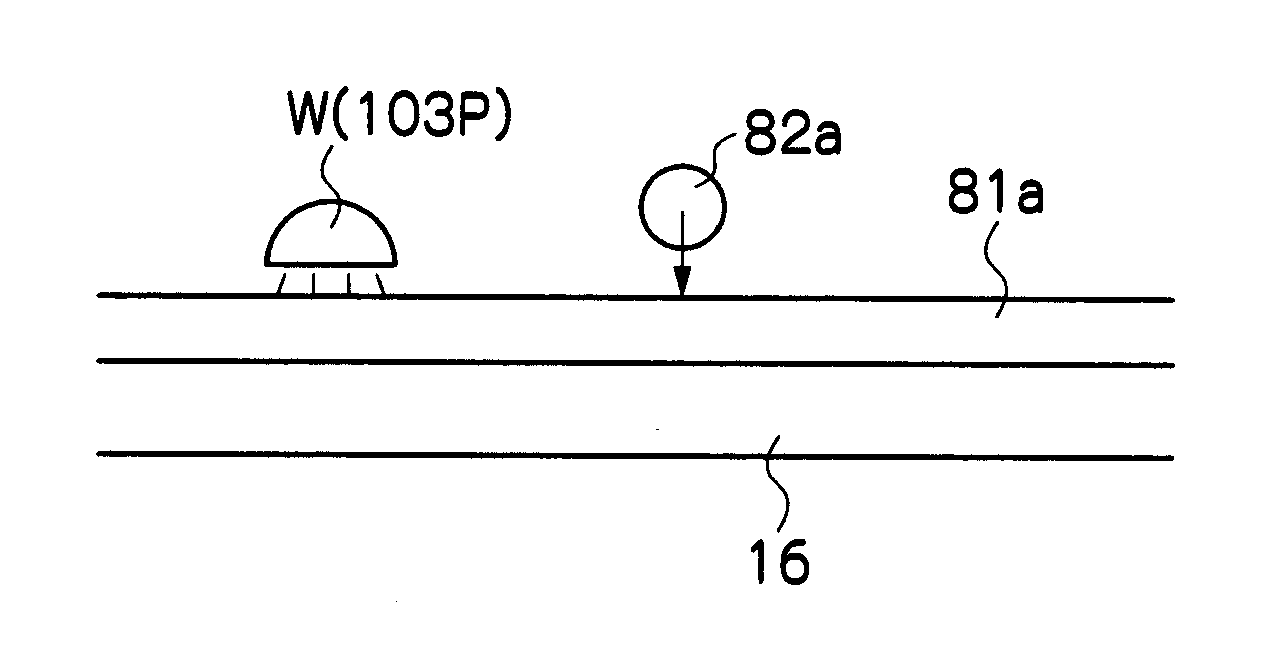Inkjet recording method and inkjet recording apparatus
a recording method and inkjet technology, applied in the direction of duplicating/marking methods, coatings, printing, etc., can solve the problems of uneven line width, easy bleeding of images, and different images formed between different types of recording media
- Summary
- Abstract
- Description
- Claims
- Application Information
AI Technical Summary
Benefits of technology
Problems solved by technology
Method used
Image
Examples
example 1
[0339]16 g of PB 15:3 (trade name: IRGALITE BLUE GLO, manufactured by CIBA SPECIALTY CHEMICALS), 48 g of dipropylene glycol diacrylate (trade name: DPGDA, manufactured by DAICEL-CYTEC COMPANY LTD.), and 16 g of SOLSPERSE 32000 (manufactured by ZENECA) were mixed, and stirred for 1 hour with a stirrer. The mixture after stirring was dispersed with an Eiger mill, thus a pigment dispersion P-1 was obtained.
[0340]The dispersion was conducted for 1 hour at a rotation speed of 9 m / s together with zirconia beads having a diameter of 65 mm filled with a filling rate of 70%.
[0341]Components of the following composition were mixed by stirring to make a solution, thus an inkjet recording liquid I-1 for cyan image recording was prepared. The inkjet recording liquid I-1 had a surface tension (25° C.) of 27 mN / m, and a viscosity (25° C.) of 15 mPa·s.
[0342]
Above-described pigment dispersion P-12.16 gDipropylene glycol diacrylate (polymerizable compound)9.84 g(Trade name: DPGDA, manufactured by DAI...
example 2
[0394]The content of the initiator in the cyan ink solution (I-1), magenta ink solution (I-2), yellow ink solution (I-3), and the undercoating liquid (II-2) of Example 1 was adjusted to prepare ink solutions and an undercoating liquid which achieve the curing sensitivity ratio Sc / Su listed in the following table, wherein Sc is the curing sensitivity of each ink solution, and Su is the curing sensitivity of the undercoating liquid. The increase or decrease in the amount of the initiator was compensated by increasing or decreasing the amount of dipropyleneglycol diacrylate.
[0395]After the undercoating liquid was cured to the same degree of the curing state of Example 1, using the experimental machine used in Example 1, a portion having no ink droplet and a 1-mm line formed by ejecting two drops of for each of yellow ink, magenta ink, and cyan ink in this order were formed alternately, and a black dot image (150 dpi×50 dpi, 1 drop) was superposed thereon to form an image. After the eje...
PUM
| Property | Measurement | Unit |
|---|---|---|
| surface tension | aaaaa | aaaaa |
| surface temperature | aaaaa | aaaaa |
| mass ratio | aaaaa | aaaaa |
Abstract
Description
Claims
Application Information
 Login to View More
Login to View More - R&D
- Intellectual Property
- Life Sciences
- Materials
- Tech Scout
- Unparalleled Data Quality
- Higher Quality Content
- 60% Fewer Hallucinations
Browse by: Latest US Patents, China's latest patents, Technical Efficacy Thesaurus, Application Domain, Technology Topic, Popular Technical Reports.
© 2025 PatSnap. All rights reserved.Legal|Privacy policy|Modern Slavery Act Transparency Statement|Sitemap|About US| Contact US: help@patsnap.com



